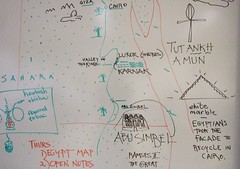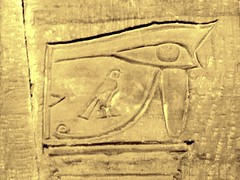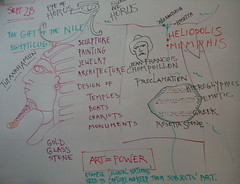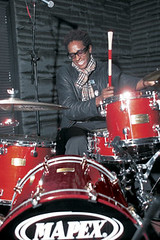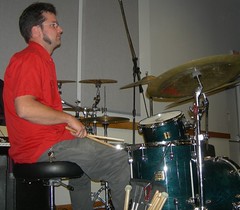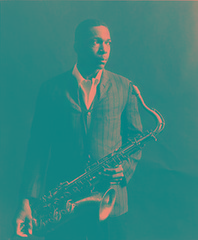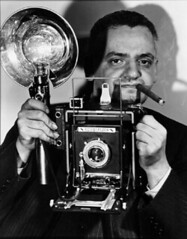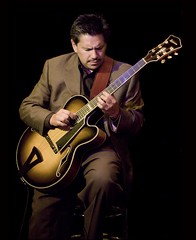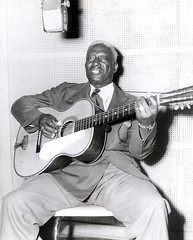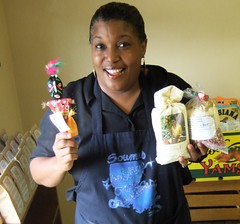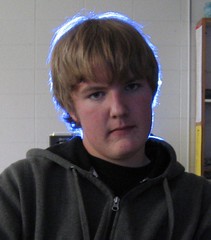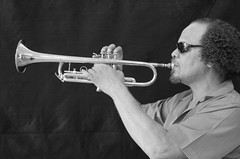The Art of Egypt presentations - powerpoint-type - based on
- 5 images with
- 2 bulleted items of info on each image.
- Documentation
- Snazzy title.
- Due 1st class next week. 12 pts.
Topics
Art-based reviews of Egyptian history
1. Old Kingdom
2. Heliopolis
3. Memphis
4. Sphinx
5. Pyramids of Khufu, Khafre, Menkaure
6. Queens' Pyramids
7. alabaster
8. Middle Kingdom
9. Thebes / Luxor
10. New Kingdom
11. Temple of Karnak
12. Hatshepsut
13. obelisks
14. pylons
15. Akhenaten
16. Valley of Kings
17. Tutankhamun
18. Ramses II
19. Abu Simbel
20. Alexander of Macedonia, 300 BC
21. Romans 30 BC
22. Scribes / literature
23. Kush
24. Alexandria
25. Rosetta stone
26. faience
27. jewelry
28. sandals
29. clothing
30. music & dance
31. cosmetics
32. glass
33. papyrus
34. gold
35. Tut's tomb
36. Horus and the Eye of Horus
Thursday, September 30, 2010
Wednesday, September 29, 2010
Horus statue by gate: the Eye of Horus
The Eye of Horus (Wedjat)[1] (previously Wadjet and the Eye of the Moon; and afterwards as The Eye of Ra) is an ancient Egyptian symbol of protection and royal power from deities, in this case from Horus or Ra, says Wikipedia.
In the Egyptian language, the word for this symbol was "Wedjat".[4][5] It was the eye of one of the earliest of Egyptian deities, Wadjet, who later became associated with Bast, Mut, and Hathor as well.
Wedjat was a solar deity and this symbol began as her eye, an all seeing eye. In early artwork, Hathor is also depicted with this eye.[6] Funerary amulets were often made in the shape of the Eye of Horus.
The Wedjat "was intended to protect the king [here] in the afterlife"[8] and to ward off evil. Ancient Egyptian and Near Eastern sailors would frequently paint the symbol on the bow of their vessel to ensure safe sea travel.[9]
In the Egyptian language, the word for this symbol was "Wedjat".[4][5] It was the eye of one of the earliest of Egyptian deities, Wadjet, who later became associated with Bast, Mut, and Hathor as well.
Wedjat was a solar deity and this symbol began as her eye, an all seeing eye. In early artwork, Hathor is also depicted with this eye.[6] Funerary amulets were often made in the shape of the Eye of Horus.
The Wedjat "was intended to protect the king [here] in the afterlife"[8] and to ward off evil. Ancient Egyptian and Near Eastern sailors would frequently paint the symbol on the bow of their vessel to ensure safe sea travel.[9]
The Egyptians, the Eye of Horus and Tattoos
Robert Trudeau asserts that “The Egyptians of the Pharaonic era were demonstrably obsessed with art. I came to understand their relationship to fine art during sessions at the Egyptian Museum, Cairo. There I saw all manner of items - from sandals to chariots - that were rendered with persuasive style and care.
Across Egypt, in ancient illustrations and in modern life, I observed an abiding need for art.
An example of the daily art of Egypt? The cab driver is not content to sit in an unadorned vehicle. He adds numerous decorative touches: stickers, special shifter handle, dangling charms, fringe, a painted Eye of Horus. Also, the farm implments of Egyptians are not plain. A wagon has painted accents on the wheels and drawbars. A bicycle may feature extra reflectors and stickers.
Compare these lives to those of the Americans. Perhaps compare the Pharaonic to the Colonials. Modern to modern.
Finally, consider how your judgment of young Americans and their artmindedness is affected by the issue of piercings and tattoos (with thanks for the idea to Jordan Shockley).
Across Egypt, in ancient illustrations and in modern life, I observed an abiding need for art.
An example of the daily art of Egypt? The cab driver is not content to sit in an unadorned vehicle. He adds numerous decorative touches: stickers, special shifter handle, dangling charms, fringe, a painted Eye of Horus. Also, the farm implments of Egyptians are not plain. A wagon has painted accents on the wheels and drawbars. A bicycle may feature extra reflectors and stickers.
Compare these lives to those of the Americans. Perhaps compare the Pharaonic to the Colonials. Modern to modern.
Finally, consider how your judgment of young Americans and their artmindedness is affected by the issue of piercings and tattoos (with thanks for the idea to Jordan Shockley).
Art = Power
If we observe the struggle between Egypt and various colonial nations such as England and France, we see role art plays in international power struggles.
The British and French have not returned all of the art they took home from Egypt during the colonial period. Nor have they and the Germas returned art taken from Greece.
Based on such incidents, I propose a thesis: Art = Power.
Pharaohs and Queens have used art to bring stimulation and serenity to their lives. In decorating their palaces, they have also used art as an instrument of power. Surrounding themselves with finely rendered images, sculptures and appurtenances, they have enhanced their status as super beings.
The British and French have not returned all of the art they took home from Egypt during the colonial period. Nor have they and the Germas returned art taken from Greece.
Based on such incidents, I propose a thesis: Art = Power.
Pharaohs and Queens have used art to bring stimulation and serenity to their lives. In decorating their palaces, they have also used art as an instrument of power. Surrounding themselves with finely rendered images, sculptures and appurtenances, they have enhanced their status as super beings.
Monday, September 27, 2010
Relief sculpture: carve an Egyptian motif in soap
Next week please bring a full size bar of soap to class (or bring several to get bonus points). I recommend Ivory-type soap for it forgives the neophyte carver. 10 pts.
We will assay the ancient art of relief sculpture.
Bas relief sculpture: the art of monuments, tombs and coins
A relief is a sculptured artwork where a modelled form is raised, or in sunken-relief lowered, from a plane from which the main elements of the composition project (or sink), says Wikipedia.
Reliefs are common throughout the world, for example on the walls of monumental buildings. The frieze in the classical Corinthian order is often enriched with bas-relief (low relief). Alto-relievo (high-relief) may be seen in the pediments of classical temples, e.g., the Parthenon.
A bas-relief ("low relief", French pronunciation: [baʁəljɛf], from the Italian basso rilievo) or low relief is the quality of an projecting image where the overall depth is shallow. The background is very compressed or completely flat, as on most coins, on which all images are in low-relief.
Lorenzo Ghiberti's gilded bronze "Doors of Paradise", Baptistery, Florence combine high relief main figures with backgrounds mostly in low relief.
Bas-relief is very suitable for scenes with many figures and other elements such as a landscape or architectural background. A bas-relief may use any medium or technique of sculpture, but stone carving and metal casting are the traditional ones. If more than 50% of most rounded or cylindrical elements such as heads and legs project from the background, a sculpture is usually considered to be "alto rilievo" or "high relief", although the degree of relief within both types may vary across a composition, with prominent features such as faces in higher relief.
We will assay the ancient art of relief sculpture.
Bas relief sculpture: the art of monuments, tombs and coins
A relief is a sculptured artwork where a modelled form is raised, or in sunken-relief lowered, from a plane from which the main elements of the composition project (or sink), says Wikipedia.
Reliefs are common throughout the world, for example on the walls of monumental buildings. The frieze in the classical Corinthian order is often enriched with bas-relief (low relief). Alto-relievo (high-relief) may be seen in the pediments of classical temples, e.g., the Parthenon.
A bas-relief ("low relief", French pronunciation: [baʁəljɛf], from the Italian basso rilievo) or low relief is the quality of an projecting image where the overall depth is shallow. The background is very compressed or completely flat, as on most coins, on which all images are in low-relief.
Lorenzo Ghiberti's gilded bronze "Doors of Paradise", Baptistery, Florence combine high relief main figures with backgrounds mostly in low relief.
Bas-relief is very suitable for scenes with many figures and other elements such as a landscape or architectural background. A bas-relief may use any medium or technique of sculpture, but stone carving and metal casting are the traditional ones. If more than 50% of most rounded or cylindrical elements such as heads and legs project from the background, a sculpture is usually considered to be "alto rilievo" or "high relief", although the degree of relief within both types may vary across a composition, with prominent features such as faces in higher relief.
Sunday, September 19, 2010
Jazz review quiz / open notes, multiple choice
Jazz quiz
1. First city of jazz: __ __.
2. Second city of Jazz (and of the US in general): __ .
3. Third city to which the fathers of jazz - such as Joe Oliver, Louis
Armstrong and Jellyroll Morton - relocated: __ __ .
4. Movement of impoverished black Americans from the farms of the Deep South to urban centers of Upper Midwest and Northeast: a) diplomacy b) dispora c) displacement d) dislocation .
5. Approximate date for the birth of jazz: a) 1800 b) 1850's c)
1900 d) 1920's.
6. Name given to the place in New Orleans where slaves gathered on
Sundays: a) river levees b) Ashanti circle c) Place Congo d) Vieux
Carre.
7. Louisiana term for people of mixed ethnic background, esp. a
mixture of French, Spanish, native American and Afro-Caribbean: __ .
8. Gens de couleur libre was a special ethnic category in NO. It
indicated a person who was African-American, yet not a slave. T / F
9. Another name for the historic French Quarter is Vieux Carre; it
means: a) Spanish Quarter b) Old Quarter c) French District d)
Slave Quarters .
10. A radical change in his instrument's shape was the signature of
bebop jazz artist Dizzy Gilespie. His instrumentwas the ____ .
11. Gillespie, Ella Fitzgerald and other jazzers offered vocal
improvisation with random vocables and syllables or without words at
all. This is called __ singing.
12. World War I and the Immigration Act of 1924 halted the flow of
European immigrants to the emerging industrial centers of the
Northeast and Midwest, causing shortages of workers in the factories
and openings for immigrating African-Americans. T / F
13. Chronological order of the development of jazz: a) Dixieland,
big band-style swing, bebop, Latin jazz, free jazz b) big band-style
swing, Dixieland, bebop, Latin jazz, free jazz c) bebop, Dixieland,
big band-style swing, Latin jazz, free jazz
14. In jazz the skilled performer will interpret a tune in very
individual ways, never playing the same composition exactly the same
way twice. Thus while jazz may be difficult to define, ______ is
clearly one of its key elements.
a) swing b) improvisation c) syncopation d) concentration.
1. New Orleans
2. Chicago
3. NYC (Harlem is not a city; it is a neighborhood in NYC)
4. diaspora
5. 1900
6. Place Congo, or Congo Square
7. Creole
8. T
9. Old Quarter
10. trumpet
11.scat
12. T
13. Dixieland, swing, bebop, etc
14. improvisation
1. First city of jazz: __ __.
2. Second city of Jazz (and of the US in general): __ .
3. Third city to which the fathers of jazz - such as Joe Oliver, Louis
Armstrong and Jellyroll Morton - relocated: __ __ .
4. Movement of impoverished black Americans from the farms of the Deep South to urban centers of Upper Midwest and Northeast: a) diplomacy b) dispora c) displacement d) dislocation .
5. Approximate date for the birth of jazz: a) 1800 b) 1850's c)
1900 d) 1920's.
6. Name given to the place in New Orleans where slaves gathered on
Sundays: a) river levees b) Ashanti circle c) Place Congo d) Vieux
Carre.
7. Louisiana term for people of mixed ethnic background, esp. a
mixture of French, Spanish, native American and Afro-Caribbean: __ .
8. Gens de couleur libre was a special ethnic category in NO. It
indicated a person who was African-American, yet not a slave. T / F
9. Another name for the historic French Quarter is Vieux Carre; it
means: a) Spanish Quarter b) Old Quarter c) French District d)
Slave Quarters .
10. A radical change in his instrument's shape was the signature of
bebop jazz artist Dizzy Gilespie. His instrumentwas the ____ .
11. Gillespie, Ella Fitzgerald and other jazzers offered vocal
improvisation with random vocables and syllables or without words at
all. This is called __ singing.
12. World War I and the Immigration Act of 1924 halted the flow of
European immigrants to the emerging industrial centers of the
Northeast and Midwest, causing shortages of workers in the factories
and openings for immigrating African-Americans. T / F
13. Chronological order of the development of jazz: a) Dixieland,
big band-style swing, bebop, Latin jazz, free jazz b) big band-style
swing, Dixieland, bebop, Latin jazz, free jazz c) bebop, Dixieland,
big band-style swing, Latin jazz, free jazz
14. In jazz the skilled performer will interpret a tune in very
individual ways, never playing the same composition exactly the same
way twice. Thus while jazz may be difficult to define, ______ is
clearly one of its key elements.
a) swing b) improvisation c) syncopation d) concentration.
1. New Orleans
2. Chicago
3. NYC (Harlem is not a city; it is a neighborhood in NYC)
4. diaspora
5. 1900
6. Place Congo, or Congo Square
7. Creole
8. T
9. Old Quarter
10. trumpet
11.scat
12. T
13. Dixieland, swing, bebop, etc
14. improvisation
Thursday, September 16, 2010
Field trip to the band room to try out the drum kit next week
Fine arts students will be given basic instruction, a couple of sticks and the opportunity to sit down behind a snare, hi-hat and snare drum - with kick pedal under right foot - in the band room next week. I saw music director Mr LeBlanc at a party and made the deal.
Cannot wait to try it again myself - I am not worth a flip at it but I want to learn - and see you give it a whack.
Cannot wait to try it again myself - I am not worth a flip at it but I want to learn - and see you give it a whack.
Making the audience feel like dancing: syncopation
In music, syncopation includes a variety of rhythms which are in some way unexpected in that they deviate from the strict succession of regularly spaced strong and weak beats in a meter (pulse). These include a stress on a normally unstressed beat or a rest where one would normally be stressed.
More simply, syncopation is a general term for a disturbance or interruption of the regular flow of rhythm; a placement of rhythmic stresses or accents where they wouldn't normally occur.[2]
Syncopation is used in many musical styles, and is fundamental in Afrocuban derived styles such as funk, ska, reggae, ragtime, rap, jump blues, progressive electronic dance music, progressive rock, extreme metal, jazz, breakbeat, drum'n'bass and dubstep.
"All dance music makes use of [syncopation] and it's often a vital element that helps tie the whole track together".[3] In the form of a back beat, syncopation is used in virtually all contemporary popular music.
Syncopation has been an important element of musical composition since at least the Middle Ages. For some musical styles, such as jazz and ragtime, syncopation is an essential part of their character.[2]
More simply, syncopation is a general term for a disturbance or interruption of the regular flow of rhythm; a placement of rhythmic stresses or accents where they wouldn't normally occur.[2]
Syncopation is used in many musical styles, and is fundamental in Afrocuban derived styles such as funk, ska, reggae, ragtime, rap, jump blues, progressive electronic dance music, progressive rock, extreme metal, jazz, breakbeat, drum'n'bass and dubstep.
"All dance music makes use of [syncopation] and it's often a vital element that helps tie the whole track together".[3] In the form of a back beat, syncopation is used in virtually all contemporary popular music.
Syncopation has been an important element of musical composition since at least the Middle Ages. For some musical styles, such as jazz and ragtime, syncopation is an essential part of their character.[2]
Tuesday, September 14, 2010
Storyville, St Paul's Bottoms and other Jazz notes
Storyville, the fabled New Orleans red light district, is often mentioned a s a birthplace of jazz.
Storyville was the red-light district of New Orleans, Louisiana, from 1897 through 1917, says Wikipedia.
Locals usually simply referred to the area as The District. The nickname Storyville was in reference to city alderman Sidney Story, who wrote the legislation setting up the district.
The District was set up to limit prostitution to one area of town where authorities could monitor and regulate the practice. In the late 1890s, the New Orleans city government studied the legalized red light districts of northern German and Dutch ports and set up Storyville based on such models. Between 1895 and 1915, "blue books" were published in Storyville. These books were guides to prostitution for visitors to the district's services including house descriptions, prices, particular services and the "stock" each house had to offer. The Storyville blue-books were inscribed with the motto: "Order of the Garter: Honi Soit Qui Mal Y Pense (Shame to Him Who Evil Thinks)."
St Paul's Bottoms was the equivalent district in Shreveport. It is said to be one of the places the folksinger Leadbelly learned his guitar style.
general vocab -
ergonomics
incendiary
cerebral
visceral
Jazz bio of the day: saxophonist John Coltrane.
Instruments of the day invented by the Belgian musician Adolphe Saxe in the mid 1800's.
Movie coming to Robinson Film Center on Sept 25, 26: a documentary on the painter John-Michel Basquiat. I'll be introducing the showing on Sat at 3:30 pm.
Recommended this week at LSUS Black Box Theater: the edgy drama "Oleanna," written by plawright David Mamet.
Storyville was the red-light district of New Orleans, Louisiana, from 1897 through 1917, says Wikipedia.
Locals usually simply referred to the area as The District. The nickname Storyville was in reference to city alderman Sidney Story, who wrote the legislation setting up the district.
The District was set up to limit prostitution to one area of town where authorities could monitor and regulate the practice. In the late 1890s, the New Orleans city government studied the legalized red light districts of northern German and Dutch ports and set up Storyville based on such models. Between 1895 and 1915, "blue books" were published in Storyville. These books were guides to prostitution for visitors to the district's services including house descriptions, prices, particular services and the "stock" each house had to offer. The Storyville blue-books were inscribed with the motto: "Order of the Garter: Honi Soit Qui Mal Y Pense (Shame to Him Who Evil Thinks)."
St Paul's Bottoms was the equivalent district in Shreveport. It is said to be one of the places the folksinger Leadbelly learned his guitar style.
general vocab -
ergonomics
incendiary
cerebral
visceral
Jazz bio of the day: saxophonist John Coltrane.
Instruments of the day invented by the Belgian musician Adolphe Saxe in the mid 1800's.
Movie coming to Robinson Film Center on Sept 25, 26: a documentary on the painter John-Michel Basquiat. I'll be introducing the showing on Sat at 3:30 pm.
Recommended this week at LSUS Black Box Theater: the edgy drama "Oleanna," written by plawright David Mamet.
"Sheets of sound:" saxophonist John Coltrane
John William Coltrane (sometimes abbreviated "Trane"; September 23, 1926 – July 17, 1967[1]) was an American jazz saxophonist and composer, says Wikipedia.
Working in the bebop and hard bop idioms early in his career, Coltrane helped pioneer the use of modes in jazz and later was at the forefront of free jazz.
He was prolific, organizing at least fifty recording sessions as a leader during his recording career, and appeared as a sideman on many other albums, notably with trumpeter Miles Davis and pianist Thelonious Monk.
As his career progressed, his music took on an increasingly spiritual dimension. His second wife was pianist Alice Coltrane, and their son Ravi Coltrane is also a saxophonist.
He influenced innumerable musicians, and remains one of the most significant tenor saxophonists in jazz history. He received many awards, among them a posthumous Special Citation from the Pulitzer Prize Board in 2007 for his "masterful improvisation, supreme musicianship and iconic centrality to the history of jazz."[2]
Coltrane recorded historic sessions with Miles Davis in January 1958. In October of that year, jazz critic Ira Gitler coined the term "sheets of sound" to describe the style Coltrane developed during his stint with Monk and was perfecting in Davis' group, now a sextet. His playing was compressed, with rapid runs cascading in hundreds of notes per minute.
He stayed with Davis until April 1960, working with alto saxophonist Cannonball Adderley; pianists Red Garland, Bill Evans, and Wynton Kelly; bassist Paul Chambers; and drummers Philly Joe Jones and Jimmy Cobb. During this time he participated in the Davis sessions Milestones and Kind of Blue, and the live recordings Miles & Monk at Newport and Jazz at the Plaza.[1]
Working in the bebop and hard bop idioms early in his career, Coltrane helped pioneer the use of modes in jazz and later was at the forefront of free jazz.
He was prolific, organizing at least fifty recording sessions as a leader during his recording career, and appeared as a sideman on many other albums, notably with trumpeter Miles Davis and pianist Thelonious Monk.
As his career progressed, his music took on an increasingly spiritual dimension. His second wife was pianist Alice Coltrane, and their son Ravi Coltrane is also a saxophonist.
He influenced innumerable musicians, and remains one of the most significant tenor saxophonists in jazz history. He received many awards, among them a posthumous Special Citation from the Pulitzer Prize Board in 2007 for his "masterful improvisation, supreme musicianship and iconic centrality to the history of jazz."[2]
Coltrane recorded historic sessions with Miles Davis in January 1958. In October of that year, jazz critic Ira Gitler coined the term "sheets of sound" to describe the style Coltrane developed during his stint with Monk and was perfecting in Davis' group, now a sextet. His playing was compressed, with rapid runs cascading in hundreds of notes per minute.
He stayed with Davis until April 1960, working with alto saxophonist Cannonball Adderley; pianists Red Garland, Bill Evans, and Wynton Kelly; bassist Paul Chambers; and drummers Philly Joe Jones and Jimmy Cobb. During this time he participated in the Davis sessions Milestones and Kind of Blue, and the live recordings Miles & Monk at Newport and Jazz at the Plaza.[1]
Sunday, September 12, 2010
Miles Davis: presentations on historic jazz figures due Tues; quiz on Thurs.
Comparisons of 2 historic jazz figures will be presented and evaluated on Tues, Sept 14.
15 pts. See specs earlier on this site.
Also, please plan for an open-notes quiz on all material on jazz on Thurs.
15 pts. See specs earlier on this site.
Also, please plan for an open-notes quiz on all material on jazz on Thurs.
Wednesday, September 8, 2010
Photographia: open notes review quiz
Fine arts / photography
1. According to RWNAF.org's Ansel Adams bio, the famous photographer
would probably agree with the title "landscape photographer." T / F
2. Adams was a tireless worker for the cause of a) Democratic issues
b) health foods c) impoverished people d) conservation.
3. The view camera used by photographers like Adams was unusual from
today's cameras in a) size of the film area b) possible length of
exposure c) resemblance to the camera obscura d) the image
produced.
4. One of these is not a mountain range: a) Tetons b) Sierra Nevada
c) Yosemite d) Rockies.
5. Chiaroscuro: a) painter's rich coloration b) deep light and dark
areas in an image c) dramatic portraiture d) side lighted image.
6. Developed an early form of photo on paper that he termed the
Callotype. a) Louis Daguerre b) William Henry Fox Talbot c)
Nicephore Niepce d) Auguste Lumiere.
7. Earliest of French pioneers in photography. a) Louis Daguerre b)
William Henry Fox Talbot c) Nicephore Niepce d) Auguste Lumiere.
8. British pioneer in photography. a) Louis Daguerre b) William Henry
Fox Talbot c) Nicephore Niepce d) Auguste Lumiere.
9. US Civil war photographer Matthew Brady used the type of
metal-plate photo developed by this French inventor. a) Louis Daguerre
b) William Henry Fox Talbot c) Nicephore Niepce d) Auguste Lumiere.
10. Camera obscura: the word "obscura" refers to a) darkened b) pin
hole aperture c) using natural light d) historic item.
11. Vibrant visionaries created a new mausoleum for the ossified of
the city. T / F
12. The Norton family's wealth was built upon success in a) banking
b) natural gas c) petroleum d) railroads.
13. Norton is perhaps best known for its Remingtons and Russells. They
are about a) wild west b) landscapes c) birds of America d) photo
realism.
14. To measure or judge a work: a) delineate b) describe c)
evaluate d) capture in detail.
15. Rembrandt lighting begins with side lighting but locates the light
source ahead of and slightly __ the subject. a) above b) below c)
behind d) aside.
16. Xanadu: a) hideaway b) cozy cave c) city in the sky d) palace.
17. Art-like pieces of work that present a pop image: a) art nouveau
b) bauhaus c) schlock d) kitsch.
1. No.
2. conservation
3. size of the film area
4. Yosemite
5. deep light and dark
6. Fox Talbot
7. Niepce
8. Fox Talbot
9. Daguerre
10. darkened
11. T
12. petroleum
13. wild west
14. evaluate
15. above
16. palace
17. kitsch
1. According to RWNAF.org's Ansel Adams bio, the famous photographer
would probably agree with the title "landscape photographer." T / F
2. Adams was a tireless worker for the cause of a) Democratic issues
b) health foods c) impoverished people d) conservation.
3. The view camera used by photographers like Adams was unusual from
today's cameras in a) size of the film area b) possible length of
exposure c) resemblance to the camera obscura d) the image
produced.
4. One of these is not a mountain range: a) Tetons b) Sierra Nevada
c) Yosemite d) Rockies.
5. Chiaroscuro: a) painter's rich coloration b) deep light and dark
areas in an image c) dramatic portraiture d) side lighted image.
6. Developed an early form of photo on paper that he termed the
Callotype. a) Louis Daguerre b) William Henry Fox Talbot c)
Nicephore Niepce d) Auguste Lumiere.
7. Earliest of French pioneers in photography. a) Louis Daguerre b)
William Henry Fox Talbot c) Nicephore Niepce d) Auguste Lumiere.
8. British pioneer in photography. a) Louis Daguerre b) William Henry
Fox Talbot c) Nicephore Niepce d) Auguste Lumiere.
9. US Civil war photographer Matthew Brady used the type of
metal-plate photo developed by this French inventor. a) Louis Daguerre
b) William Henry Fox Talbot c) Nicephore Niepce d) Auguste Lumiere.
10. Camera obscura: the word "obscura" refers to a) darkened b) pin
hole aperture c) using natural light d) historic item.
11. Vibrant visionaries created a new mausoleum for the ossified of
the city. T / F
12. The Norton family's wealth was built upon success in a) banking
b) natural gas c) petroleum d) railroads.
13. Norton is perhaps best known for its Remingtons and Russells. They
are about a) wild west b) landscapes c) birds of America d) photo
realism.
14. To measure or judge a work: a) delineate b) describe c)
evaluate d) capture in detail.
15. Rembrandt lighting begins with side lighting but locates the light
source ahead of and slightly __ the subject. a) above b) below c)
behind d) aside.
16. Xanadu: a) hideaway b) cozy cave c) city in the sky d) palace.
17. Art-like pieces of work that present a pop image: a) art nouveau
b) bauhaus c) schlock d) kitsch.
1. No.
2. conservation
3. size of the film area
4. Yosemite
5. deep light and dark
6. Fox Talbot
7. Niepce
8. Fox Talbot
9. Daguerre
10. darkened
11. T
12. petroleum
13. wild west
14. evaluate
15. above
16. palace
17. kitsch
Greatest early jazz guitarists: Charlie Christian, Stephane Grapelli
Using class notes please compose a Detailed but brief (3-4 sentences) summary of one of these recent topics -
- Creoles and WASP's
- Jazz and the Black American diaspora
- Satchmo and the beginnings of jazz
Hand-written but legible.
- Jazzy opening
- details in addition to generalities
5 pts.
- Creoles and WASP's
- Jazz and the Black American diaspora
- Satchmo and the beginnings of jazz
Hand-written but legible.
- Jazzy opening
- details in addition to generalities
5 pts.
Tuesday, September 7, 2010
Jazz & blues migrated north in the African-American diaspora at the turn of the century
Between 1910 and 1930, the African American population grew by about 40% in Northern states, mostly in the major cities, says Wikipedia.
Jazz and blues music traveled north, too.
Cities such as Chicago, Detroit, New York, and Cleveland had some of the biggest increases in the early part of the century. Because changes were concentrated in cities, urban tensions rose as African Americans and new or recent European immigrants, both groups chiefly from rural societies, competed for jobs and housing with the white ethnic working class. Tensions were often most severe between ethnic Irish, defending their positions, and recent immigrants and blacks.
African Americans moved as individuals or small family groups. There was no government assistance, but often northern industries, such as the railroads, meatpacking and stockyards, recruited people. The primary factor for migration was the racial climate and widespread violence of lynching in the South. In the North, they could find better schools and adult men could vote (joined by women after 1920). Burgeoning industries meant there were job opportunities.
1. African-Americans left to escape the discrimination and racial segregation of late 19th century constitutions and Jim Crow laws.
2. The boll weevil infestation of Southern cotton fields in the late 1910s forced many sharecroppers and laborers to search for alternative employment opportunities.
3. The enormous expansion of war industries created job openings for blacks—not in the factories but in service jobs vacated by new factory workers.
4. World War I and the Immigration Act of 1924 effectively put a halt to the flow of European immigrants to the emerging industrial centers of the Northeast and Midwest, causing shortages of workers in the factories.
vocab -
exodus - mass exit
diaspora - ethnic mass migration
A diaspora (in Greek, διασπορά – "a scattering [of seeds]") is the movement or migration of a group of people, such as those sharing a national and/or ethnic identity, away from an established or ancestral homeland. When capitalized, the Diaspora refers to the exile of the Jewish people and Jews living outside ancient or modern day Israel.
Jazz and blues music traveled north, too.
Cities such as Chicago, Detroit, New York, and Cleveland had some of the biggest increases in the early part of the century. Because changes were concentrated in cities, urban tensions rose as African Americans and new or recent European immigrants, both groups chiefly from rural societies, competed for jobs and housing with the white ethnic working class. Tensions were often most severe between ethnic Irish, defending their positions, and recent immigrants and blacks.
African Americans moved as individuals or small family groups. There was no government assistance, but often northern industries, such as the railroads, meatpacking and stockyards, recruited people. The primary factor for migration was the racial climate and widespread violence of lynching in the South. In the North, they could find better schools and adult men could vote (joined by women after 1920). Burgeoning industries meant there were job opportunities.
1. African-Americans left to escape the discrimination and racial segregation of late 19th century constitutions and Jim Crow laws.
2. The boll weevil infestation of Southern cotton fields in the late 1910s forced many sharecroppers and laborers to search for alternative employment opportunities.
3. The enormous expansion of war industries created job openings for blacks—not in the factories but in service jobs vacated by new factory workers.
4. World War I and the Immigration Act of 1924 effectively put a halt to the flow of European immigrants to the emerging industrial centers of the Northeast and Midwest, causing shortages of workers in the factories.
vocab -
exodus - mass exit
diaspora - ethnic mass migration
A diaspora (in Greek, διασπορά – "a scattering [of seeds]") is the movement or migration of a group of people, such as those sharing a national and/or ethnic identity, away from an established or ancestral homeland. When capitalized, the Diaspora refers to the exile of the Jewish people and Jews living outside ancient or modern day Israel.
Voodoo, gumbo and things Creole: Panderina Soumas, Soumas Heritage Creole Gift Shop, Bossier City
Plaçage was a recognized extralegal system in which white French and Spanish and later Creole men entered into the equivalent of common-law marriages with women of African, Indian and white (European) Creole descent, says Wikipedia.
The term comes from the French placer meaning "to place with". The women were not legally recognized as wives, but were known as placées; their relationships were recognized among the free people of color as mariages de la main gauche or left-handed marriages.
Many were often quarteronnes or quadroons, the offspring of a European and a mulatto, but plaçage did occur between whites and mulattoes and blacks. The system flourished throughout the French and Spanish colonial periods, and apparently reached its zenith during the latter, between 1769 and 1803.
It was not limited to Louisiana, but also flourished in the cities of Natchez and Biloxi, Mississippi; Mobile, Alabama; St. Augustine and Pensacola, Florida;[1] as well as Saint-Domingue (present-day Haiti). Plaçage, however, drew most of its fame—and notoriety—from its open application in New Orleans. Despite the prevalence of interracial encounters in the colony, not all Creole women of color were or became placées.
The term comes from the French placer meaning "to place with". The women were not legally recognized as wives, but were known as placées; their relationships were recognized among the free people of color as mariages de la main gauche or left-handed marriages.
Many were often quarteronnes or quadroons, the offspring of a European and a mulatto, but plaçage did occur between whites and mulattoes and blacks. The system flourished throughout the French and Spanish colonial periods, and apparently reached its zenith during the latter, between 1769 and 1803.
It was not limited to Louisiana, but also flourished in the cities of Natchez and Biloxi, Mississippi; Mobile, Alabama; St. Augustine and Pensacola, Florida;[1] as well as Saint-Domingue (present-day Haiti). Plaçage, however, drew most of its fame—and notoriety—from its open application in New Orleans. Despite the prevalence of interracial encounters in the colony, not all Creole women of color were or became placées.
Norton Landscape Photo Project due Tues, Sept 21, 15 pts
Due Tues, Sept 21, for 15 pts:
The Norton Landscape Photos
GoogleDoc Presentation (aka powerpoint show).
Photo essay of people and landscape (5 images, total) using the campus of RW Norton Art Foundation. Try to visit at sunset to be able to use the sweetest light.
This is, of course, an independent trip, not a class field trip.
Demonstrate
a) side-lighted portraiture
b) S curve composition
c) sunset lighting
d) water reflection composition
e) geometry in nature
f) kinetic energy
Include snappy title and explanatory subtitle.
Also, identifications of people and site(s).
The Norton Landscape Photos
GoogleDoc Presentation (aka powerpoint show).
Photo essay of people and landscape (5 images, total) using the campus of RW Norton Art Foundation. Try to visit at sunset to be able to use the sweetest light.
This is, of course, an independent trip, not a class field trip.
Demonstrate
a) side-lighted portraiture
b) S curve composition
c) sunset lighting
d) water reflection composition
e) geometry in nature
f) kinetic energy
Include snappy title and explanatory subtitle.
Also, identifications of people and site(s).
Jazz represents a confluence of African and European musics
Jazz is a music genre that originated at the beginning of the 20th century in African American communities in the Southern United States from a confluence of African and European music traditions, says Wikipedia.
From its early development until the present, jazz has incorporated music from 19th and 20th century American popular music.[1] Its West African pedigree is evident in its use of blue notes, improvisation, polyrhythms, syncopation, and the swung note.[2]
The word "jazz" (in early years also spelled "jass") began as a West Coast slang term and was first used to refer to music in Chicago in about 1915.
From its beginnings in the early 20th century jazz has spawned a variety of subgenres:
- New Orleans Dixieland dating from the early 1910s,
- big band-style swing from the 1930s and 1940s,
- bebop from the mid-1940s,
- Latin jazz fusions such as Afro-Cuban and Brazilian jazz,
- free jazz from the 1950s and 1960s,
- jazz fusion from the 1970s,
- acid jazz from the 1980s (which added funk and hip-hop influences), and
- Smooth and nujazz in the 1990s.
While jazz may be difficult to define, improvisation is clearly one of its key elements. Early blues was commonly structured around a repetitive call-and-response pattern, a common element in the African American oral tradition. A form of folk music which rose in part from work songs and field hollers of rural Blacks, early blues was also highly improvisational. These features are fundamental to the nature of jazz.
In jazz the skilled performer will interpret a tune in very individual ways, never playing the same composition exactly the same way twice. Depending upon the performer's mood and personal experience, interactions with fellow musicians, or even members of the audience, a jazz musician/performer may alter melodies, harmonies or time signature at will.
Jazz music has always had a "tension between jazz as a commercial music and an art form".[4]
Predecessors of jazz:
Ragtime: The classically trained pianist Scott Joplin in 1899 had an international hit with "Maple Leaf Rag". He wrote numerous popular rags, including, "The Entertainer", combining syncopation, banjo figurations and sometimes call-and-response, which led to the ragtime idiom being taken up by classical composers including Claude Debussy and Igor Stravinsky.
Blues music was undocumented in the early years. The first popularizer of a type of blues was W. C. Handy, whose "Memphis Blues" of 1912 and "St. Louis Blues" of 1914 both became jazz standards.[18] Additional influences came from spirituals and even vaudeville.
From its early development until the present, jazz has incorporated music from 19th and 20th century American popular music.[1] Its West African pedigree is evident in its use of blue notes, improvisation, polyrhythms, syncopation, and the swung note.[2]
The word "jazz" (in early years also spelled "jass") began as a West Coast slang term and was first used to refer to music in Chicago in about 1915.
From its beginnings in the early 20th century jazz has spawned a variety of subgenres:
- New Orleans Dixieland dating from the early 1910s,
- big band-style swing from the 1930s and 1940s,
- bebop from the mid-1940s,
- Latin jazz fusions such as Afro-Cuban and Brazilian jazz,
- free jazz from the 1950s and 1960s,
- jazz fusion from the 1970s,
- acid jazz from the 1980s (which added funk and hip-hop influences), and
- Smooth and nujazz in the 1990s.
While jazz may be difficult to define, improvisation is clearly one of its key elements. Early blues was commonly structured around a repetitive call-and-response pattern, a common element in the African American oral tradition. A form of folk music which rose in part from work songs and field hollers of rural Blacks, early blues was also highly improvisational. These features are fundamental to the nature of jazz.
In jazz the skilled performer will interpret a tune in very individual ways, never playing the same composition exactly the same way twice. Depending upon the performer's mood and personal experience, interactions with fellow musicians, or even members of the audience, a jazz musician/performer may alter melodies, harmonies or time signature at will.
Jazz music has always had a "tension between jazz as a commercial music and an art form".[4]
Predecessors of jazz:
Ragtime: The classically trained pianist Scott Joplin in 1899 had an international hit with "Maple Leaf Rag". He wrote numerous popular rags, including, "The Entertainer", combining syncopation, banjo figurations and sometimes call-and-response, which led to the ragtime idiom being taken up by classical composers including Claude Debussy and Igor Stravinsky.
Blues music was undocumented in the early years. The first popularizer of a type of blues was W. C. Handy, whose "Memphis Blues" of 1912 and "St. Louis Blues" of 1914 both became jazz standards.[18] Additional influences came from spirituals and even vaudeville.
Back lighting, rim lighting: glamour lighting
Shine a light at the back of someone's head and you are on your way to creating a glamour shot. It works particularly well when the person has blond hair.
The light creates a halo, which requires special effort and is associated with glamour.
Indeed, placing a light behind your subject separates the person from the backdrop. It will be most dramatically used if you can aim the light directly at the back of the subject.
The light creates a halo, which requires special effort and is associated with glamour.
Indeed, placing a light behind your subject separates the person from the backdrop. It will be most dramatically used if you can aim the light directly at the back of the subject.
Rembrandt and European wealth
Wealthy nations and the fine arts: one seems to engender the other.
Holland was a rich nation because of Dutch expertise in sailing, import and export, banking and manufacturing. They made lace goods and woolen goods for the Euro market. They imported spices from their colonies, which included Indonesia and part of India.
Rembrandt became a painter because wealthy men paid high sums for paintings created with sumptuousness and verisimilitude. Capable artists in Amsterdam could command high fees.
Amsterdam is on the Amstel River and the Nord Zee, a splendid trading territory.
Nearby, the Dutch city of Rotterdam is at the mouth of Western Europe's greatest river, the Rhine.
Neighbors to the Nederlands are Belgium and Germany, aka Deutschland ("Deutschland uber alles").
Holland was a rich nation because of Dutch expertise in sailing, import and export, banking and manufacturing. They made lace goods and woolen goods for the Euro market. They imported spices from their colonies, which included Indonesia and part of India.
Rembrandt became a painter because wealthy men paid high sums for paintings created with sumptuousness and verisimilitude. Capable artists in Amsterdam could command high fees.
Amsterdam is on the Amstel River and the Nord Zee, a splendid trading territory.
Nearby, the Dutch city of Rotterdam is at the mouth of Western Europe's greatest river, the Rhine.
Neighbors to the Nederlands are Belgium and Germany, aka Deutschland ("Deutschland uber alles").
Researching Jazz musicians' bios in Fine Arts Survey
Using 3 images of each artist and 3 bulleted biographical notes on each image, produce and present to the class a comparison between 2 of the following artists.
Bio material -
- dates
- song title(s)
- locations
- group names
- style of jazz
- innovation
- instrument
- musical partners
- influenced later players . ..
Improvising cats -
Jazz musicians with the highest status in this American art form -
- Jellyroll Morton
- Joe King Oliver
- Louis Armstrong
- Fletcher Henderson
- Charlie Parker
- Edward Duke Ellington
- William Count Basie
- Benny Goodman
- Glenn Miller
- Lionel Hampton
- Charlie Christian
- Charlie Bird Parker
- Dizzy Gillespie
- Thelonius Monk
- Miles Davis
- John Coltrane
- Charles Mingus
- Billie Holiday
- Ella Fitzgerald
- Nat King Cole
- Herbie Hancock
- Wynton Marsalis
- George Gershwin, classical / jazz
- Leonard Bernstein, classical / jazz
For concise biographies, please see the Ken Burns Jazz site.
Bio material -
- dates
- song title(s)
- locations
- group names
- style of jazz
- innovation
- instrument
- musical partners
- influenced later players . ..
Improvising cats -
Jazz musicians with the highest status in this American art form -
- Jellyroll Morton
- Joe King Oliver
- Louis Armstrong
- Fletcher Henderson
- Charlie Parker
- Edward Duke Ellington
- William Count Basie
- Benny Goodman
- Glenn Miller
- Lionel Hampton
- Charlie Christian
- Charlie Bird Parker
- Dizzy Gillespie
- Thelonius Monk
- Miles Davis
- John Coltrane
- Charles Mingus
- Billie Holiday
- Ella Fitzgerald
- Nat King Cole
- Herbie Hancock
- Wynton Marsalis
- George Gershwin, classical / jazz
- Leonard Bernstein, classical / jazz
For concise biographies, please see the Ken Burns Jazz site.
Friday, September 3, 2010
Creoles, Italians and African-Americans: the Birth of Jazz in the Cescent City about 1900
African Americans are the best known of the participants in creating a hot music at the turn of the century. The birth of jazz seems mostly to have happened first in the port city of New Orleans.
But Af-Ams were joined in the creative act by Creole men.
Defining Creole:
1. Europeans born the new world: French or Spanish.
2. All peoples of the colonial era who were born in the new world (Europe being the old world): Africans, indigenous peoples, Europeans. And there was quite a bit of mixing between those groups.
Finally, who were the Euros who played hot music and helped birth jazz? A large percentage of them were Italians, I've seen in my reading.
What was it about Italians in New Orleans around 1900?
They were
- outsiders; as Roman Catholics in a society dominated by WASP's, they had so little status that most were forced into housing adjacent to the black quarters.
- it was not unusual to hear these Southern Europeans - most of them were from Naples or the island of Sicily - called "dagos" or "wops."
Btw, the Creoles hated being in bands with black men. Many Creoles had formal musical education. Most black musicians were not educated - even if they were talented.
Somehow these groups forged musical arrangements of all sorts of tunes - gospel-based melodies, tunes from vaudeville - into a music that was full of emotion and excitement.
That was jazz.
But Af-Ams were joined in the creative act by Creole men.
Defining Creole:
1. Europeans born the new world: French or Spanish.
2. All peoples of the colonial era who were born in the new world (Europe being the old world): Africans, indigenous peoples, Europeans. And there was quite a bit of mixing between those groups.
Finally, who were the Euros who played hot music and helped birth jazz? A large percentage of them were Italians, I've seen in my reading.
What was it about Italians in New Orleans around 1900?
They were
- outsiders; as Roman Catholics in a society dominated by WASP's, they had so little status that most were forced into housing adjacent to the black quarters.
- it was not unusual to hear these Southern Europeans - most of them were from Naples or the island of Sicily - called "dagos" or "wops."
Btw, the Creoles hated being in bands with black men. Many Creoles had formal musical education. Most black musicians were not educated - even if they were talented.
Somehow these groups forged musical arrangements of all sorts of tunes - gospel-based melodies, tunes from vaudeville - into a music that was full of emotion and excitement.
That was jazz.
Subscribe to:
Posts (Atom)
